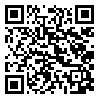Volume 65, Issue 6 (3 2007)
Tehran Univ Med J 2007, 65(6): 54-59 |
Back to browse issues page
Download citation:
BibTeX | RIS | EndNote | Medlars | ProCite | Reference Manager | RefWorks
Send citation to:



BibTeX | RIS | EndNote | Medlars | ProCite | Reference Manager | RefWorks
Send citation to:
Zarrinkoub F, Beigi A. Epidemiology of hyperbilirubinemia in the first 24 hours after birth. Tehran Univ Med J 2007; 65 (6) :54-59
URL: http://tumj.tums.ac.ir/article-1-774-en.html
URL: http://tumj.tums.ac.ir/article-1-774-en.html
Abstract: (16605 Views)
Background: Jaundice is one of the most frequent problems observed in newborns. Our purpose was to investigate the incidence and the risk factors on jaundice noted in the first 24 hours after birth.
Methods: All newborns observed to have jaundice within the first 24 hours after birth were enrolled prospectively in this study. Laboratory evaluations included blood group typing of mother and newborn, hemoglobin and hematocrit, complete blood count, peripheral blood smear, reticulocyte count, G6PD activity, maternal indirect and neonatal direct Coombs test, and serum total, conjugated, and unconjugated bilirubin. In all cases, gender, birth weight, Apgar scores, gestational age, mode of delivery, birth trauma, cephalhematoma, maternal age, parity, or any siblings with neonatal jaundice were recorded. Data were analyzed using one-way ANOVA, Student's t-, and chi-square tests.
Results: Of a total of 2096 newborns delivered in one year, 122 (5.8%) developed jaundice within the first 24 hours after birth. Risk factors for hyperbilirubinemia were ABO incompatibility, prematurity, infection, G6PD deficiency, cephalhematoma, asphyxia, and Rh disease. There were no statistically significant relationships between jaundice and maternal age, parity, mode of delivery, neonatal gender or previous siblings with jaundice (p>0.05).
Conclusions: Jaundice observed in the initial 24 hours after birth was infrequent, but clinically significant. All newborns should be followed by repeated exams within the first 24 hours after birth and before discharge, especially if the maternal blood group is O.
Methods: All newborns observed to have jaundice within the first 24 hours after birth were enrolled prospectively in this study. Laboratory evaluations included blood group typing of mother and newborn, hemoglobin and hematocrit, complete blood count, peripheral blood smear, reticulocyte count, G6PD activity, maternal indirect and neonatal direct Coombs test, and serum total, conjugated, and unconjugated bilirubin. In all cases, gender, birth weight, Apgar scores, gestational age, mode of delivery, birth trauma, cephalhematoma, maternal age, parity, or any siblings with neonatal jaundice were recorded. Data were analyzed using one-way ANOVA, Student's t-, and chi-square tests.
Results: Of a total of 2096 newborns delivered in one year, 122 (5.8%) developed jaundice within the first 24 hours after birth. Risk factors for hyperbilirubinemia were ABO incompatibility, prematurity, infection, G6PD deficiency, cephalhematoma, asphyxia, and Rh disease. There were no statistically significant relationships between jaundice and maternal age, parity, mode of delivery, neonatal gender or previous siblings with jaundice (p>0.05).
Conclusions: Jaundice observed in the initial 24 hours after birth was infrequent, but clinically significant. All newborns should be followed by repeated exams within the first 24 hours after birth and before discharge, especially if the maternal blood group is O.
| Rights and permissions | |
 |
This work is licensed under a Creative Commons Attribution-NonCommercial 4.0 International License. |





